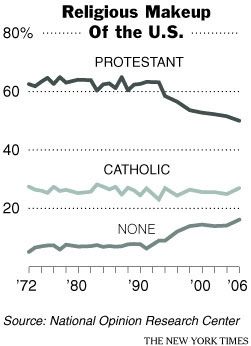
I first encountered Periannan Senapathy on the sci.bio.evolution newsgroup. He was promoting the idea that the various animal phyla arose independantly rather than from descent from a common ancestor.
Here's one of his early postings on sci.bio.evolution from
Feb. 13, 1995"
As a molecular biologist and genome researcher, I have enjoyed following the many ongoing debates in this and other forums over evolution theory -- both as a whole, and various aspects thereof. My own work in genome mechanics and genetic molecular structures has yielded much evidence pertaining to these debates, and over the years I have published several of my findings in PNAS, J Molec Biol, J Biol Chem, Nucleic Acids Research, Science and other journals.
Until recently I have published these findings separately, although clearly they are all related. Now, however, I am publishing a single unified theory that incorporates all of these pieces -- and an enormous body of other evidence as well. This new unified theory proposes a radically alternative explanation for the origin and diversity of life on Earth, asserting that most of Earth's organisms must have originated independently in one primordial pond, and that the natural-selection mechanism described by evolution theories could have produced only minor variations among essentially similar species. These conclusions surely will provoke a lively debate in the scientific community, but a fair reading of the theory will show that it easily explains all of the available evidence -- molecular, biochemical, organismal and fossil -- and notably accommodates all of the contra-evolution evidence that has dogged evolutionists since Darwin.
His ideas were eventually published in 1994 in a book with the following provocative title: "Independent Birth of Organisms. A New Theory that Distinct Organisms Arose Independently from the Primordial Pond, Showing that Evolutionary Theories are Fundamentally Incorrect." The book was published by "Genome Publications."
Periannan Senapathy owns a company called "Genome International Corporation" which funds his work. The PLoS paper, for example, is funded by "Genome International Corporation" and the disclaimer reads, in part, "This project is purely an academic project, fulfilling the academic interest of the corresponding author, who owns the company." I don't know if the book is self-published.
The research article in PLoS ONE is ..
Regulapati, R., Bhasi, A., Singh. C.K., and Senapathy, P. (2008) Origination of the Split Structure of Spliceosomal Genes from Random Genetic Sequences. PLoS ONE 3(10): e3456 [doi:10.1371/journal.pone.0003456]
It address an old problem about the origin of introns. The consensus among scientists these days is that introns arose late and they are derived from insertions of self-splicing RNA's into coding regions. These were subsequently copied into DNA and integrated into the genome. The similarity between Group II introns and spliceosomal introns lends strong support to this model.
The fact that bacteria have very few introns is consistent with the idea that introns arose late in evolution. As is the fact that introns positions are not highly conserved, as one might expect if they arose early.
The Senapathy paper tries to make the case that introns are primitive and the human genome, with lots of introns, is more primitive than bacterial genomes, which have lost their introns.
Speaking of losing, this issue was resolved over ten years ago when the last holdouts for "introns early" conceded defeat. Senapathy has not come up with anything that even remotely rejuvenates that losing position.
On a more troubling note, it's beginning to look as if PLoS ONE is attracting the kooks who find it easy to get their work published in that forum. It won't be long before I stop reading papers, and abstracts, from PLoS ONE.
 Today is "Mole Day," celebrated as part of National Chemistry Week. You can read all about it on Adventures in Ethics and Science [Happy Mole Day! (What's a mole?)].
Today is "Mole Day," celebrated as part of National Chemistry Week. You can read all about it on Adventures in Ethics and Science [Happy Mole Day! (What's a mole?)].














